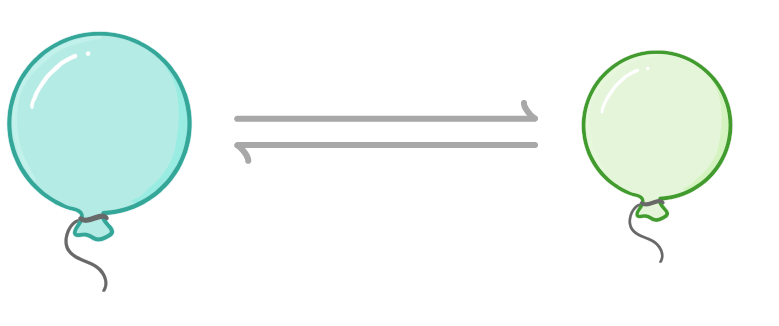Le Chatelier's Principle
This lesson covers:
- What 'Le Chatalier's principle' is
- How temperature affects the position of equilibrium
- How pressure affects the position of equilibrium
- How concentration affects the position of equilibrium
Le Chatelier's principle states that if you change the conditions of a r reaction, the position of e will shift to try and c the change.
|
At equilibrium, if there are more products than reactants, we say that the position of equilibrium lies:
In the middle
To the right
To the left
|
What are the three factors that affect the position of equilibrium?
(Press continue when you're ready to check your answer)
|

An increase in pressure moves the position of equilibrium to whichever side has the:
smaller number of gas molecules
larger number of gas molecules
|
In a reversible reaction, changes in pressure will only affect substances that are in the:
liquid state
gaseous state
solid state
|
increases / decreases
Le Chatalier's principle states that if you increase the pressure, the position of equilibrium will shift to the side that the pressure back down.
|
N2(g) + 3H2(g) ⇋ 2NH3(g)
In the above reaction, increasing the pressure will:
Shift the position of equilibrium to the left
Have no effect on the position of equilibrium
Shift the position of equilibrium to the right
|
H2(g) + I2(g) ⇋ 2HI(g)
In the above reaction, increasing the pressure will:
Shift the position of equilibrium to the left
Shift the position of equilibrium to the right
Have no effect on the position of equilibrium
|
2NO2(g) ⇋ N2O4(g) (-24 kJ mol-1)
In the reaction above, the (-24 kJ mol-1) tells us that the forward reaction is:
Exothermic
Endothermic
|
2NO2(g) ⇋ N2O4(g) (-24 kJ mol-1)
In the above reaction, increasing the temperature will:
Shift the position of equilibrium to the right
Have no effect on the position of equilibrium
Shift the position of equilibrium to the left
|
N2(g) + 3H2(g) ⇋ 2NH3(g)
For the above reaction, increasing the concentration of nitrogen will:
Have no effect on the position of equilibrium
Shift the position of equilibrium to the left
Shift the position of equilibrium to the right
|